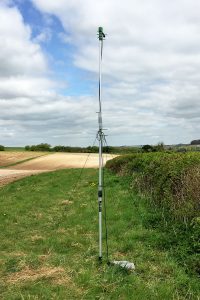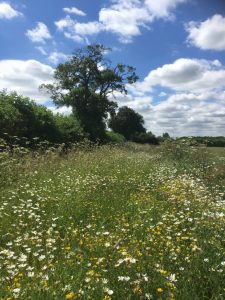What are Agri-environmental Schemes?
Agri-environmental schemes (AES) have been introduced across Europe and one of their main aims is to reverse biodiversity declines. They provide financial incentives to farmer for adopting wildlife friendly habitat management.
Types of AES habitats include…

Grass buffers in arable fields
The creation and management of grass buffer strips around arable field edges. They may vary from 2-6m in width. They are aimed at resource protection (e.g. protecting watercourses and hedgerows from agrochemicals), but have been shown to improve invertebrate abundance for insectivorous birds. Cocksfoot Dactylis glomerata or timothy Phleum pratense grasses are commonly included in grass margins to provide nesting cover and protection for overwintering insects.
Hedgerow maintenance
A countryside hedgerow is a boundary line of bushes which can also include trees. The maintenance of hedgerows for wildlife and landscape is important. The restoration of hedgerows with more than 10% gaps with two years of starting an AES agreement.
Floristically enhanced margins

Floristically enhanced margins include pollen and nectar plots and wildflower margins.
These habitats are sown with wildflowers and agricultural legumes to increase food resources for nectar feeding insects and those sown with wildflowers and grasses to provide habitat and foraging areas for insects and birds.
Wild bird seed mixture plots
A seed bearing crop that aims to provide food for wild birds over winter. Plots should be composed of at least three seed-bearing crops, for example, linseed, kale and sunflower.
